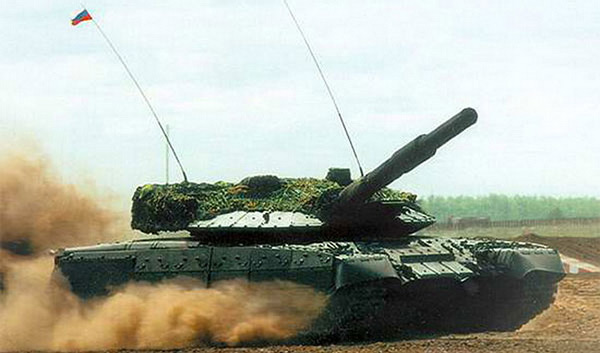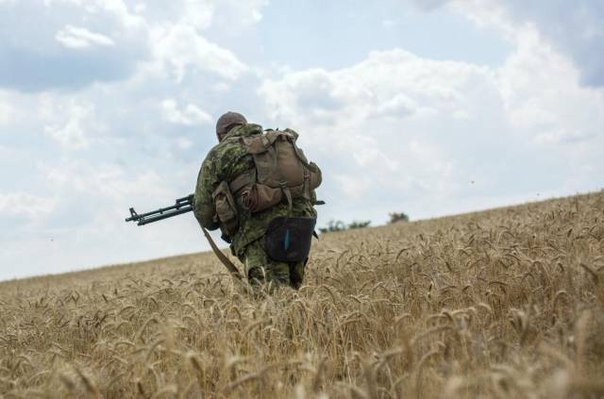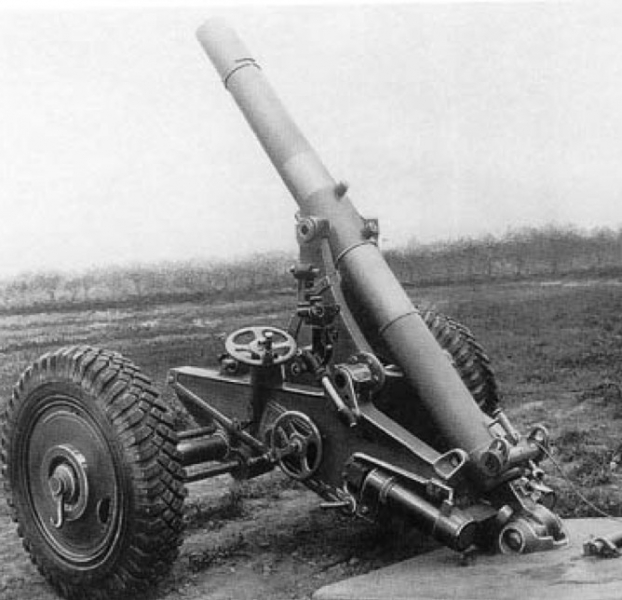
Before, continuing mortar topic, We want to say a few words about the, who carefully reads. Yes, we are not professional mortar, but what is know mortar fine, and his work was tested in practice. himself. In different places.
Therefore we took up this topic, can, and an amateur point of view. But we are not talking about mortars in general, consideration of all models, which were invented in the world, and about the most interesting solutions in mortar business.
Article, we bring to your attention today, It is a continuation of our review of unconventional design solutions, used to create mortars. AT previous article we looked at small caliber mortars. Today's start talking about large calibers, deliberately omitting medium caliber mortars.
Today, a large mortar (100 mm) caliber no surprise. rather, small surprise. A famous 82mm familiar to almost everyone. Someone remembers fondly, someone with hatred. Depending on, who fired or who fired.
The First World War showed the need for this type of weapon. Positioning for the most part, this war dictated designers "order" for such weapons. Small caliber well-proven "in an open field". But when a long defense, when the enemy buries in the ground, When building engineering major strengthening, small caliber was useless.
It was necessary to have such a weapon, which could hit the enemy even in indirect contact or in fortified bunkers and crevices. Simply put, it was necessary to create a weapon, able to fire more powerful ammunition. Hence the development of a large-caliber mortars to.
The first large-caliber surprise French. Already in 1916 It was established and adopted by the monster! Mortar 240 LT mod. 1916!
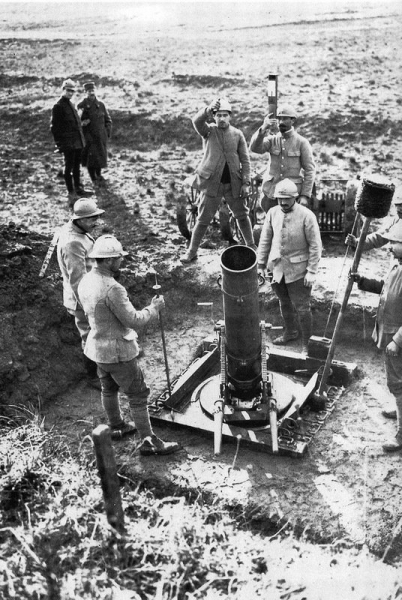
Mortar really hard - 1700 kg. Mounted on a stationary platform. For transportation versed on 4 parts. Preparation for this position mortar calculation (7 human) occupied by 12 hours to days. It was necessary to dig position, align the site for mortar, collect and disguise it.
mortars 240 LT mod. 1916 It issued not so much. But by the beginning of the Second World War, the French army had more 400 such mortars.
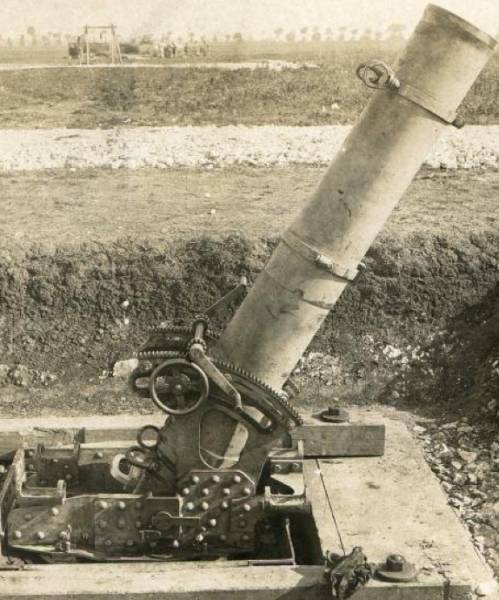
Caliber: 240 mm
barrel length: 1,7 m
rate of: 6 rounds per minute
The initial rate of mines: 145 m / s.
firing range: 2,2 km.
mines Weight, depending on the purpose of the 69 to 82 kilograms. When you hit a mine created a funnel 6-10 meters in diameter and a depth of 2 to 3,5 m.
Immediately after adopting 240 LT mod. 1916 It revealed, that in spite of the enormous power of the mortar, use it as a mobile, it was problematic. More than one and a half tons of weight, even in a state divided into parts, It was very strong argument for the creation of smaller mortar.
AT 1917 , the French take on arms Mortar 150 mm T Mod. 1917. How view, mortars fell by as much as 90 mm. Respectively, reduced weight and guns - "only" 615 kg.
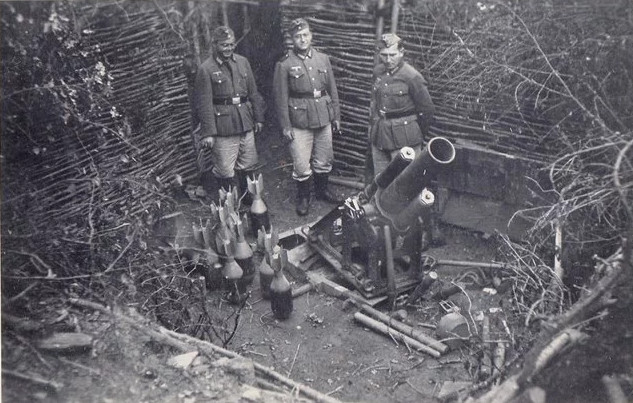
Caliber: 150 mm
barrel length: 2,1 m
The initial rate of mines: 156 м/c
mines Weight: 17 kg
firing range: 2 km
rate of: 2-4 shots per minute.
kind of, with the advent of the mortar to the transportation problems were solved. But the army has put forward new demands. The rapid reduction in the deployed state, and rapid movement around the battlefield. We faced two requirements - the power and the ability to move. And mortars again "lost".
AT 1935 It was adopted by the army heavy 120-mm mortar Mle1935 (Brandt). This mortar could be transported by road, in the back of a truck, or on a trailer at the caterpillar tractor. Furthermore, the presence of a wheel turn allow calculation of moving the mortar for short distances on their own.
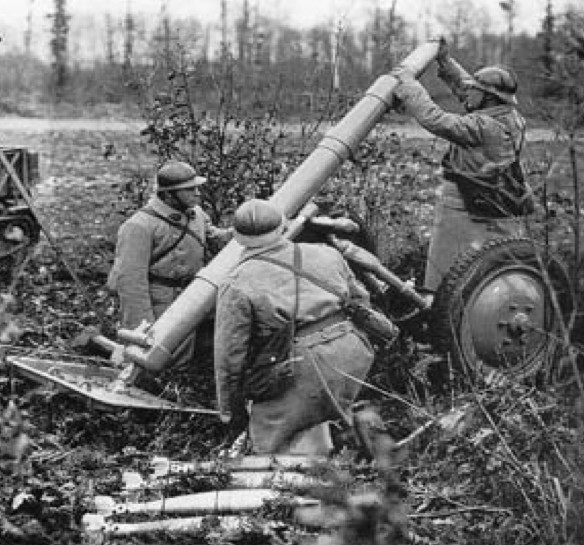
Caliber: 120 mm
barrel length: 1,8 m
Weight in firing position: 280 kg
firing range: 7 km.
rate of: 10-12 rounds per minute.
mines Weight:16,4 kg.
Mines for mortars that have been developed for different purposes. fragmentation, explosive, fiery, smoke and lighting.
AND, the main demand of the army was on this mortar performed. calculation of 7 people translated weapon from marching into the firing position of the 2-3 minutes.
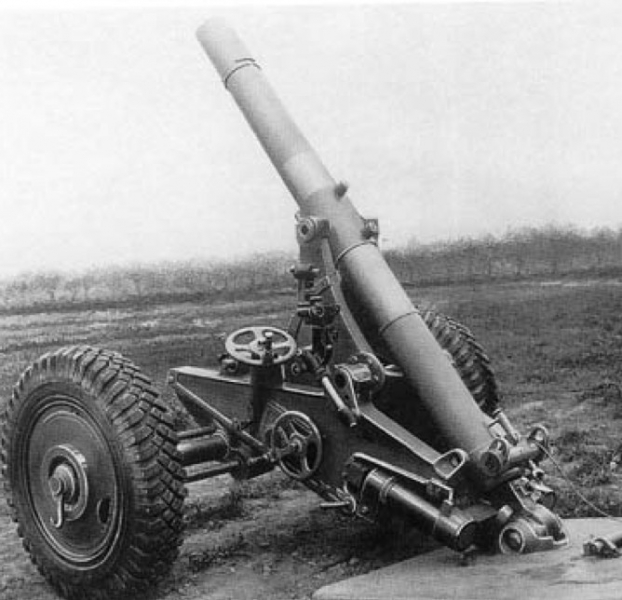
can say, that this mortar is pushed designers to 120mm caliber. True fired such mortars were only 12 pcs. Let outdated, but numerous mortars 240 LT mod. 1916 (at the beginning of the war 410 pcs) and 150 mm T Mod. 1917 (at the beginning of the war more than a thousand) hindered the introduction of good modern mortar.
Quite a different path went the development of Soviet mortars. The young republic inherited from the tsarist army several types of mortars and mortars, including 91-mm mortars and 58 GH-mm mortar FR. Both samples were fired nadkalibernymi ammunition and had a small firing range.
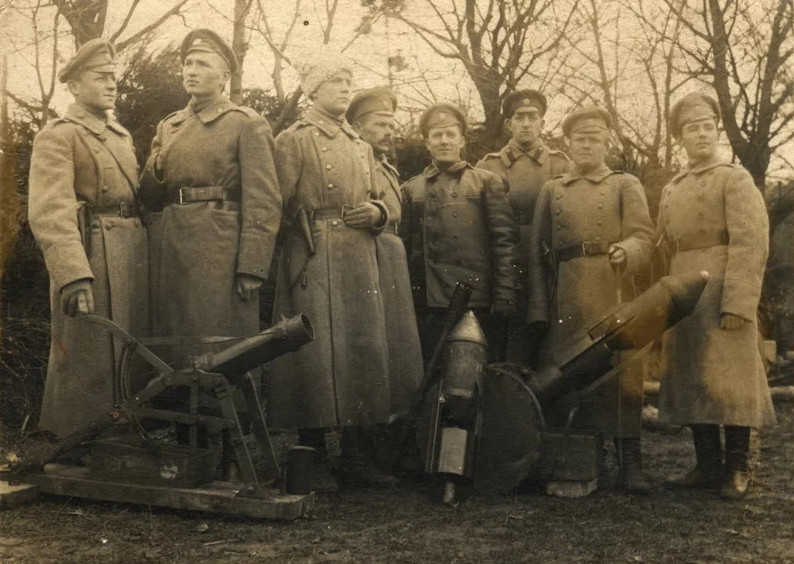 HE grenade launcher
HE grenade launcher
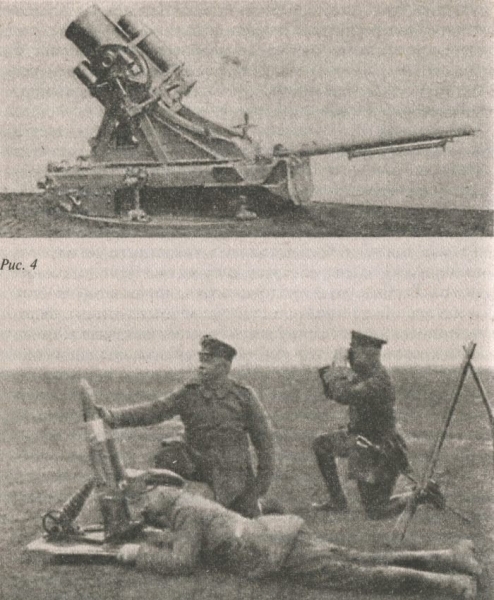 mortar FR
mortar FR
That is why a part of the Main Artillery Administration was created special artillery Commission's experience (KOSARTOP), which came at the end of 1927 beginning 1928 s design and test team "D" Gas Dynamics Laboratory Research Institute of Artillery (head H. Dorovlev). This group established in 1931 It was the first Soviet 82-mm mortar, which was adopted in 1936 year as a battalion mortar BM-36.
This raises a simple question: where does the heavy mortars?
The thing is, that in parallel with the group "D" mortars started to work on and the engineer Boris Shavyrin of Special Design Bureau number 4 at Leningrad artillery plant № 7 them. MV. Frunze (plant Arsenal).
Many readers puzzling is, why our designers engaged in small and medium caliber, but not engaged in heavy mortars. The answer is simple. "Monkey" effect.
In most European armies armed link in regiment were 105 mm mortar. That overseas 105mm gave rise to our mountain-pack mortar 107mm, about which we wrote in the previous article.
But the "parent", repeat written above, 120-mm mortar steel French Mle1935(Brandt)! They have convinced the Red Army leadership to support exactly this caliber. Because our first 120-mm mortar PM-38 by design very similar to the 82-mm BM-38.
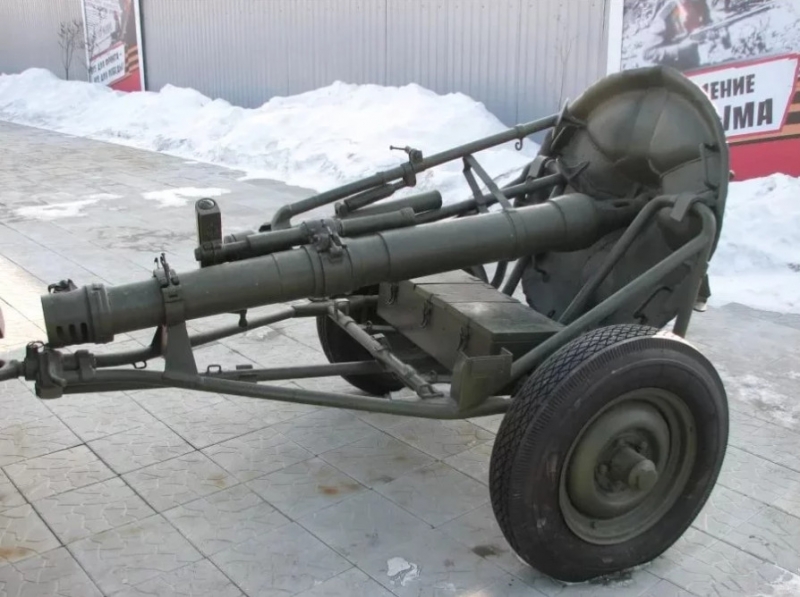
Caliber: 120 mm
elevation: +45/+85
Angle of rotation: -3/+3
rate of: to 15 rounds per minute
Effective range: 4605700 meters ...
Maximum range: 5900 m.
The initial rate of mines: 272 м/c
weight mines (OF-843): 16,2 kg.
Mortar was wheeled. Wheels have detachable metal discs and tires, filled with spongy rubber. Transportation made chetyrehkonnoy sled. The mortar can also be transported in the trailer of a motor vehicle at a speed of, not exceeding 18 km / h when driving on cobblestones, and speeds up 35 km / h when driving on asphalt road.
Modernization mortar continues with the beginning of the war. And in 1941 It was taken into service 120-mm PM-41. Designer somewhat simplified barrel, I set vvintny breech and a simple shock absorber with increased stroke. Besides, slightly modified design of the tripod and turning and lifting mechanisms.
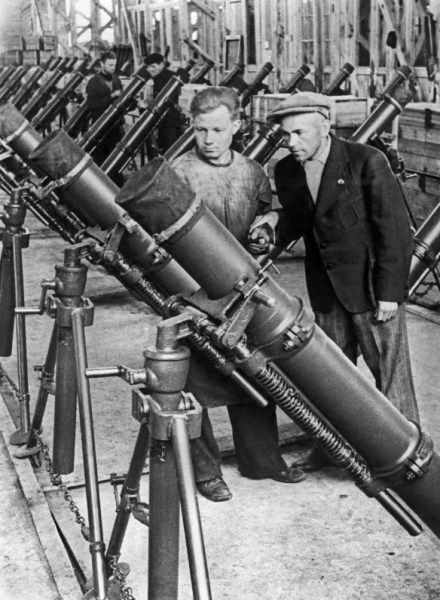
AT 1943 was adopted once upgraded adopted mortar MP-43. Notable for improved shooting device, which was dealt with without screwing the breech. It was set longer shock absorbers and swinging the gun, which greatly simplifies the leveling mechanism. AT 1945 he was given an improved sprung course for towing the vehicle mortar.
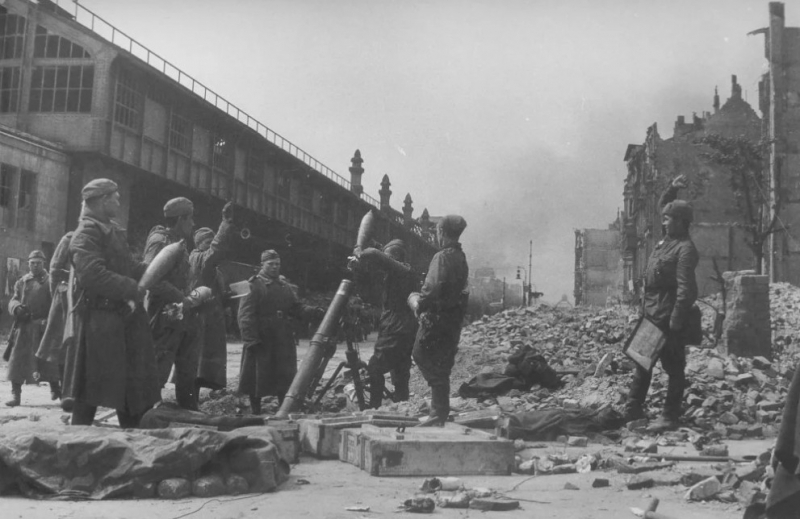
so, trends in the development of French and Soviet design schools were completely opposite. The French came from the larger to the smaller caliber, we from smallest to largest. Soviet designers, Inspired by the success of the 120-mm mortar rounds went on.
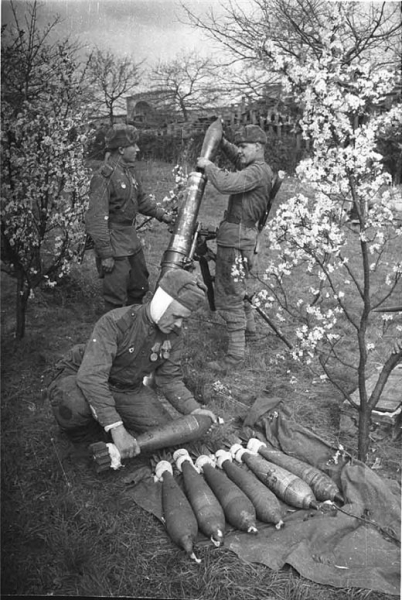
Furthermore, namely, Soviet designers have changed the purpose of the mortar itself.
At the beginning 1942 year in the Institute of the People's Commissariat of arms began to develop a new 160-mm breech-loading mortar 160-mm caliber. The initial work led Mr.. D. quarter, but in December 1942 And, the group headed. D. Teverovsky. Already in 1943 year, Urals under the direction of L. D. Şerşenya, It was manufactured prototype 160-mm mortar under index MT-13.
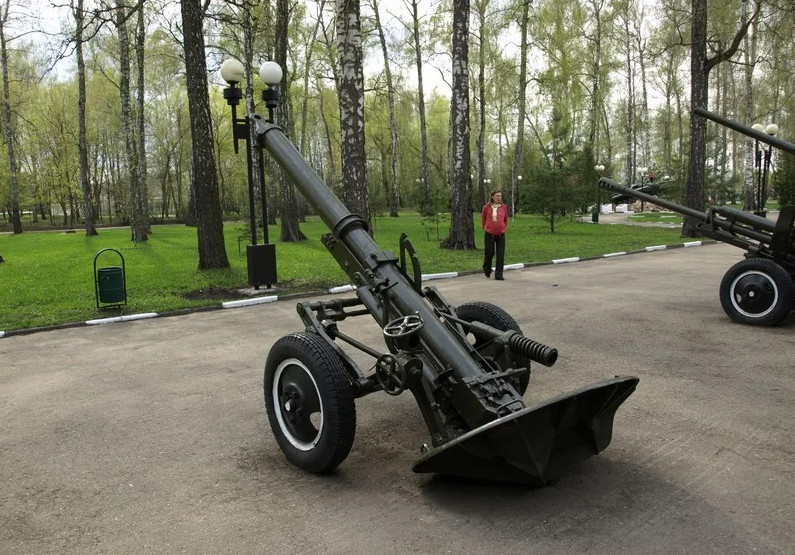
state tests were conducted, who personally approved and. Stalin 17 January 1944 , the MT-13 was accepted for service under the name "160-mm mortar obr.1943 city". Troops were no weapons of defense, a breakthrough!
The objectives of this mortar was not only a struggle with manpower, but also the destruction of tanks, destruction of bunkers and pillboxes, destruction (suppression) artillery and mortar batteries, critical objectives, breaching passages in wire fences, destruction of trenches and ditches. Simply put, Mortar is used there, where you can not use guns or does not make sense to involve the smaller caliber mortars.
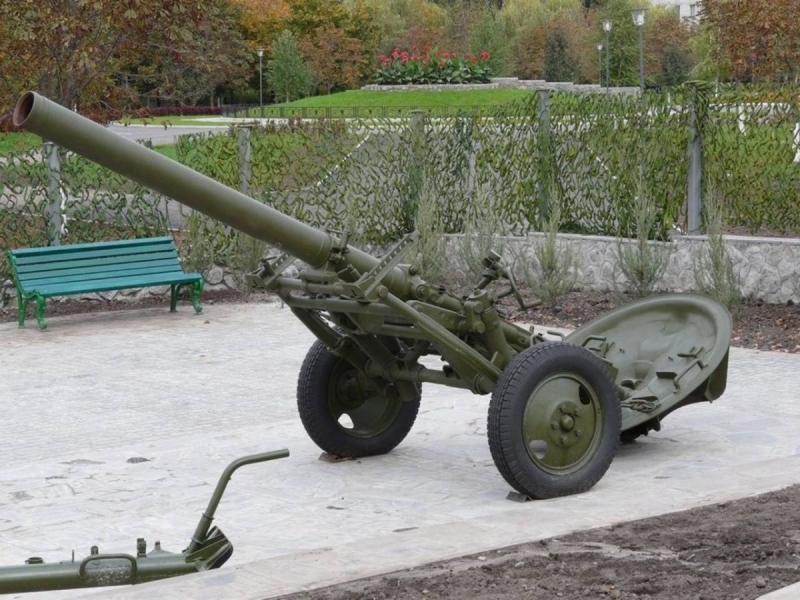
Caliber: 160 mm
rate of: 3-4 shots per minute
Range: 5100 m
speed mines: 140-245 м/c
elevation: +45/ +80
Angle of rotation: 12 (at HV +45) and 50 (at HV +80)
A rough tip can be accomplished by turning wheel.
Weight: in firing position 1170 kg, in pohodnom 1270 kg.
Shooting is conducted with high-explosive mine fuze GVMZ-7, which has two settings. Shrapnel and explosive action. weight mines 40,865 kg. Weight burster 7,78 kg.
Translation mortar from traveling to combat and from the stowed fighting takes 3-4 minutes. Calculation 7 human.
Towing mortar MT-13 made only of mechanical traction. Wherein, the world's first stem began to serve towbar, as towing problem mortar was solved in a very peculiar. Mortar hooked to the tractor barrel, to which was attached a special pivot foot.
Sprung wheel turn mortar allowed to transport it at a rate of up to 50 kmh, that is very significant for the time.
The trunk also serves as a lever, turn allows the base plate from the ground, If the weapon she buries (and she buries, and even as the!) in the ground. All combat crew hung on the trunk, and if it did not help, then it was worn shvornevuyu paw, mortar clung to the tractor, which pulls out his plate.
During the Second World War, no world army did not have such a powerful mortar, as the MT-13 and, simultaneously, mobile.
FROM 1943 mortars, the MT-13 were equipped with heavy mortar brigades, were part of the artillery divisions breakthrough RVGK. Once again I noticed - a breakthrough division, i.e, specializing in offensive actions.
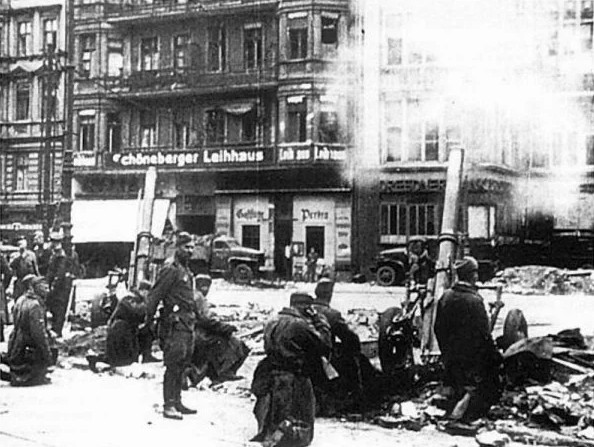
Each team consisted of three divisions (by 12 mortars in each). Already the very first combat use of the 160-mm mortar shells at the enemy made a huge psychological impact. Shots from the MT-13 were deaf, mortar shells were flying on a steep trajectory and fell almost vertically, therefore, when the first applications mentioned, Germans started signals supplied air raid.
mortars, in this article, truly epochal. Each of them has its own "flavor", the feature, which is then used in many other constructions. Furthermore, and today it is actually adopted and used in the armies of some countries. Not the most advanced, but it took a long time.
The design idea is not in place. Ideas are constantly arising, and sometimes embodied in products. Ideas are in the air. The story of the development of these ideas in our time to come ...







